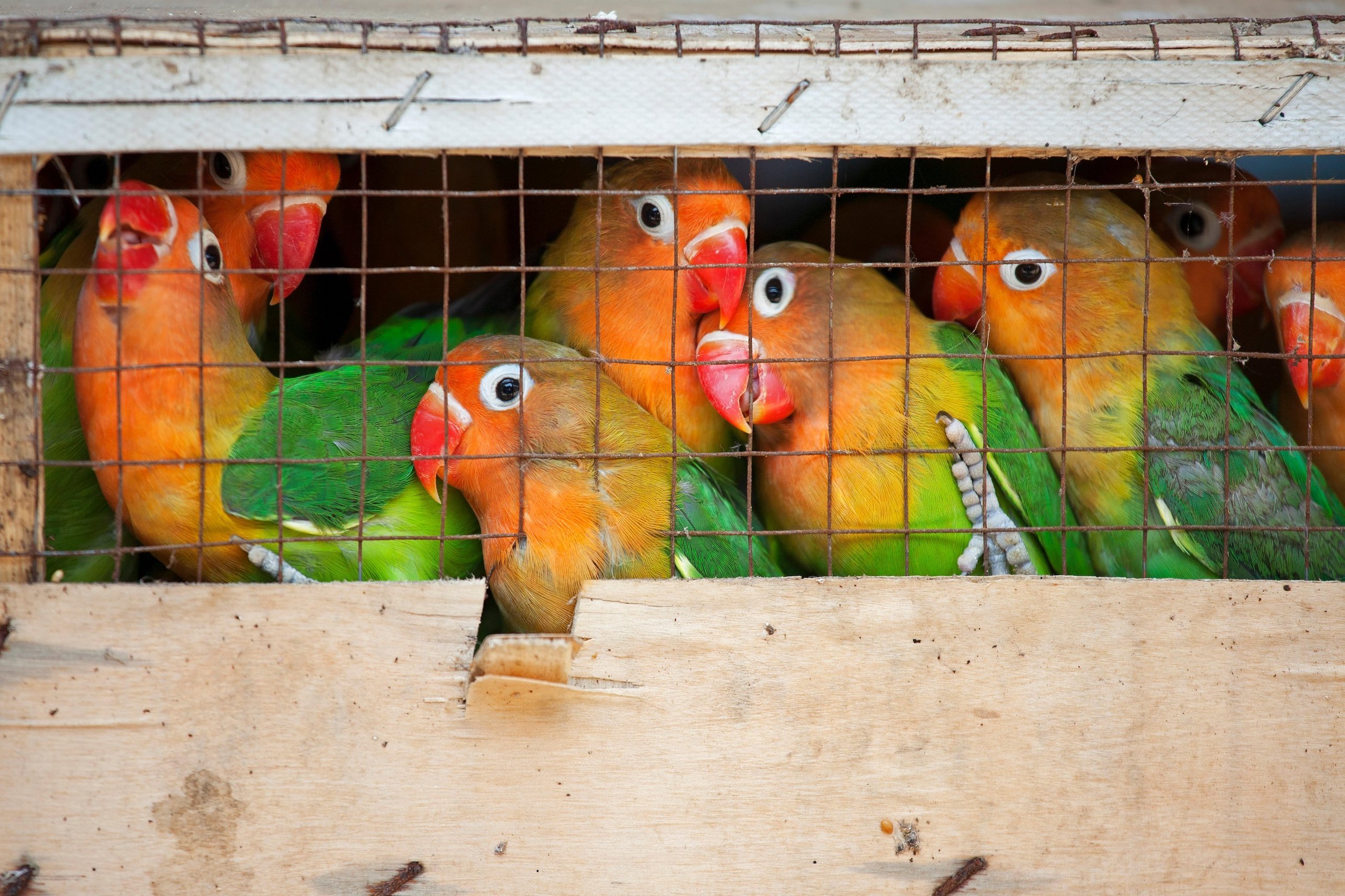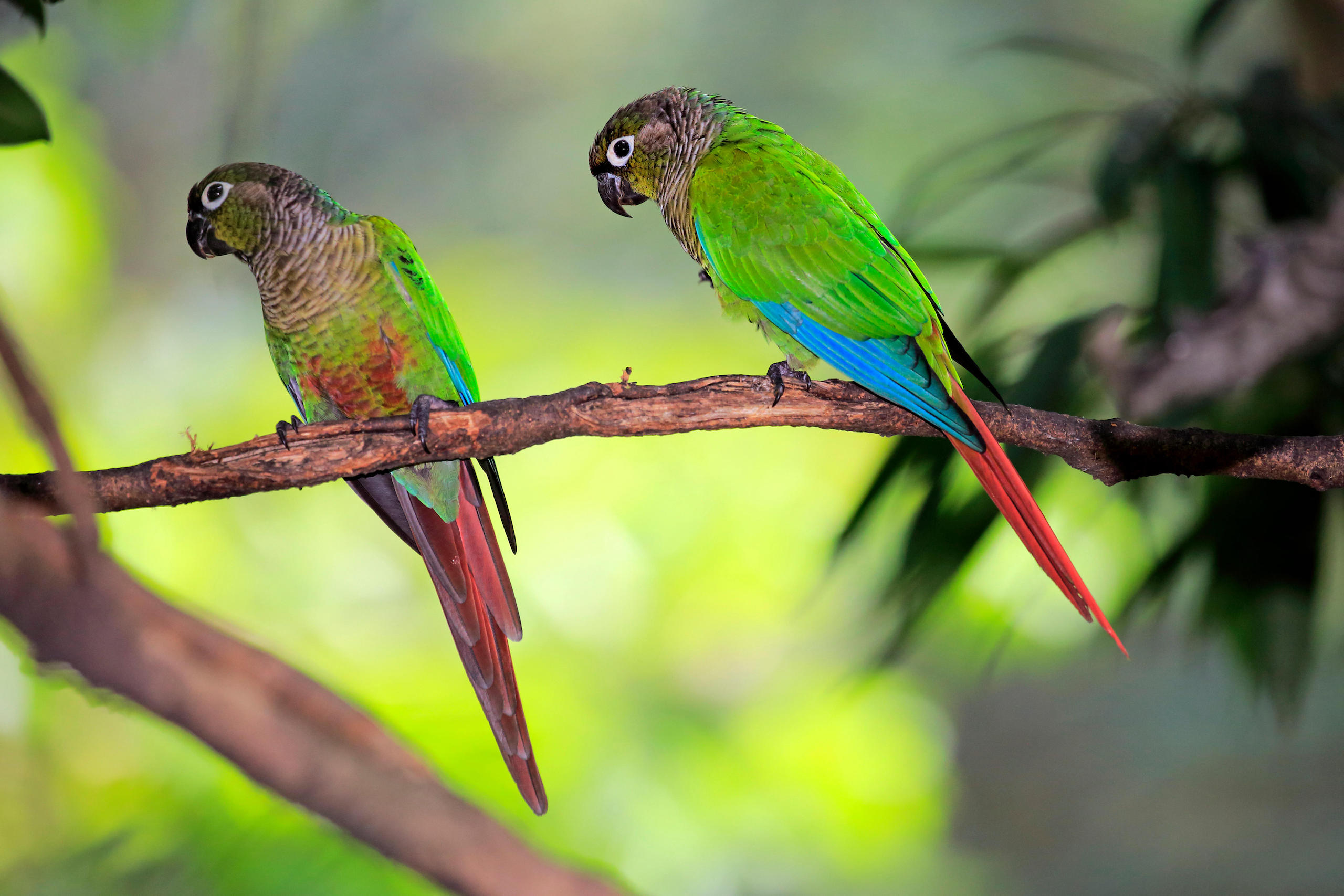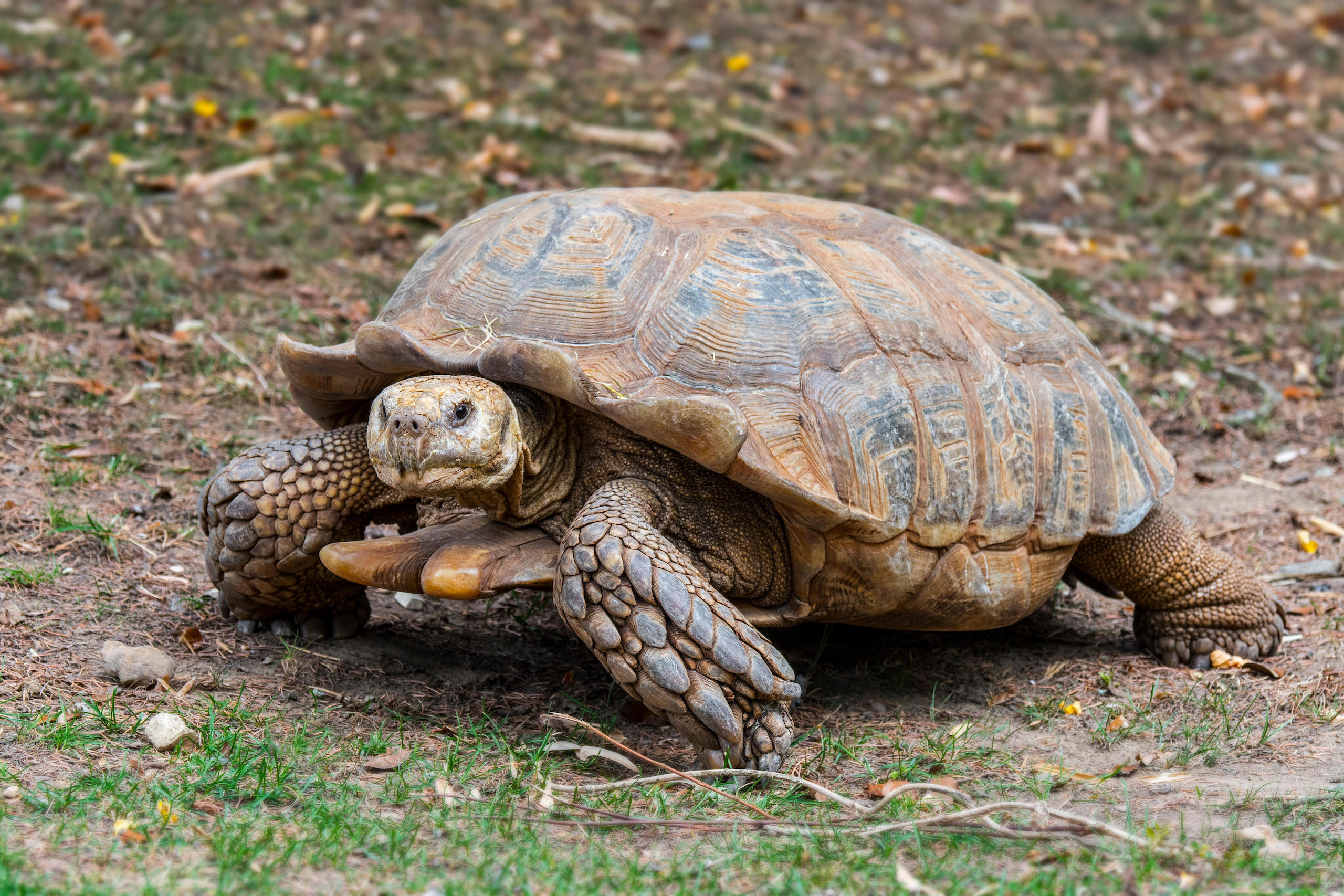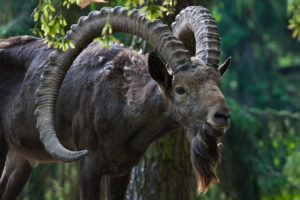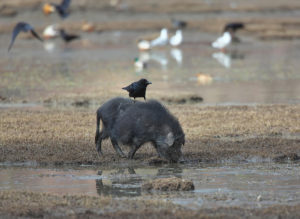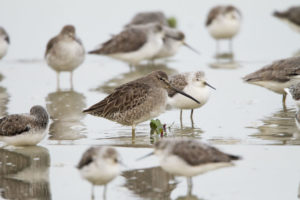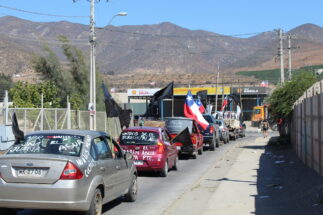Six years ago, Wang Peng, a young man from Shenzhen, was sentenced to five years in prison. His crime was selling several parrots he had bred in captivity. These included the green-cheeked parakeet, which is a CITES Appendix II species (meaning countries recognise that if trade is not closely controlled, the species may become threatened with extinction). The case became a sensation. The court found the parrots were “rare or endangered wild animals” and so covered by the law on the trade in such species, but many found this stance unreasonable.
In April this year, the Supreme People’s Court and Supreme People’s Procuratorate issued a new interpretation of the relevant laws in an attempt to resolve issues highlighted by the case.
The 20-point document provides guidance on sentencing for wildlife crimes. It requires courts and prosecutors to consider whether animals have been bred in captivity, whether breeding techniques for the species are mature and at a large scale, and how endangered the species is in the wild. Less serious cases may not reach court or be treated as administrative matters rather than criminal ones.
The interpretation seems more “reasonable” and was welcomed by legal figures and wildlife breeders. However, there are concerns over the consequences of this lighter-touch approach to wildlife crime.
Unreasonable sentences
Wang Peng appealed his five-year sentence, arguing that birds bred in captivity should not be regarded as wild animals. In 2018, the appeal court acknowledged that the sale of captive-bred animals causes less harm than that of animals taken from the wild. But it also referred to a supreme court interpretation of the Criminal Law, issued in 2000, which said “rare and endangered wild animals in the law” include those bred in captivity. The guilty verdict was upheld, but his sentence was reduced to two years.
Many felt that captive-bred animals and those caught in the wild should not be treated as equivalent, a stance also reflected by the general public. After the appeal, the well-known legal scholar Luo Xiang wrote that the judgement was still in error, as Wang Peng was not aware captive-bred animals would be treated as wild animals and therefore could not be regarded as culpable. Even the People’s Daily described the case as a failure to publicise the law, leading Wang Peng to break it unwittingly and the court to hand down what, to the public, seemed an unfair sentence.
After Shenzhen, similar cases in Jiangxi and Kunming came to the public’s attention, causing further controversy. A review by news outlet The Paper found 21 similar cases in which a total of 32 people were convicted of wildlife crimes for buying and selling parrots between 2015 and 2017. Punishments ranged from suspended sentences to 11 years in jail.
During his appeal, Wang Peng’s lawyers saw the case as a potential landmark. After the 2018 appeal, they asked the Legislative Committee of the National People’s Congress to review the supreme court’s 2000 interpretation. They received a response informing them that the supreme court had commenced a new interpretation process to “clarify that leniency should be shown when the animals concerned are bred in captivity”.
Four years later, that new interpretation finally arrived, with the influence of Wang Peng’s case and others visible. In a Q&A published on the release of the new interpretation, spokespersons for the supreme court and procuratorate stressed that sentencing for wildlife crimes should be “in line with ordinary public understanding”. The example of Fischer’s lovebird, a parrot species, was used. They say that though the species is on CITES Appendix II, it has long been bred in China. Nevertheless, for “historical reasons” breeding has often lacked certificates. According to the spokespeople: “particular caution should be used in pursuing criminal responsibility in this type of case”, with administrative approaches preferred.
The new interpretation came into effect on 9 April. Nine days later it was reported that a case against one Wang Lei, in Yucheng, Shandong, for buying 30 captive-bred Hermann’s tortoises (a CITES Appendix II species) had been dropped. This is believed to be the first application of the new interpretation.
Is captive breeding a legal loophole?
Reaction to the interpretation has been mixed. Breeders and lawyers who had handled the cases were enthusiastic. One lawyer said the distinction between captive-bred animals and those caught in the wild was a step forward, while breeders described the change as encouraging, “as if spring has arrived”. Wang Peng told reporters it gave his “sacrifice” meaning.
But conservationists and frontline law enforcement personnel have two causes for concern.
Firstly, many crimes against rare and endangered wild animals may now be treated less seriously. The new interpretation uses the value of the animals or animal products involved as a measure of seriousness, rather than the number of animals involved. Depending on circumstances, criminal proceedings now start at 10,000 or 20,000 yuan (US$1,500 or $2,950), which means “low value” cases will not reach the courts. There are also sentencing thresholds at 200,000 yuan and 2 million yuan, as well as conditions for leniency. Cases involving values up to 200,000 yuan can avoid court and any criminal proceedings if no animals have been killed, the accused shows regret and hands over any financial benefits. According to a 2017 guide from the State Forestry Administration, now the National Forestry and Grasslands Administration (NFGA), on assessing the value of wild animals and wild animal products, 4 red pandas, 19 macaques or 39 cobras would fall below that 200,000 yuan threshold. All of these are Class II protected species under China’s Wildlife Protection Law.
Secondly, the new interpretation says cases should not be prosecuted if they involve animals on a list of 9 terrestrial and 34 aquatic species approved for captive-breeding or when techniques for breeding the species are mature, and employed at a large scale to produce pets. If they are prosecuted, they should be treated leniently.
Many wild-caught animals enter trade disguised as being artificially bredAmanda Whitfort, associate professor at Hong Kong University’s Faculty of Law
Amanda Whitfort, associate professor at Hong Kong University’s Faculty of Law, told China Dialogue: “The principle on which this distinction is said to have been drawn is that such cases do not harm animals in the wild and their ecosystems. But many wild-caught animals enter trade disguised as being artificially bred.” She argues that not treating the trade, possession and use of endangered species claimed to be captive-bred as criminal cases may worsen poaching and smuggling worldwide and encourage illegal traders.
One forestry police officer with over 30 years of experience told China Dialogue that the new interpretation shifts the onus of proof to law enforcement. Previously, suspects had to show captive-breeding licences and labels to avoid conviction. Now, it is up to police and prosecutors to prove that animals have been taken from the wild. That, he says, will have a huge impact on the work of grassroots wildlife law enforcement because there are currently no techniques to determine if an animal has been captive-bred or taken from the wild.
Take our five-minute questionnaire for a chance to win a $100 gift card
He gave an example: “Say I see someone coming down the mountainside with a dead silver pheasant, so I go and ask him where he got it. He says it’s his own, but it escaped and flew up the mountainside, and he killed it while recapturing it. I can’t do anything. Even if we have witnesses who say they saw him kill a wild silver pheasant, or that he doesn’t even keep silver pheasants, it’s hard to put together the necessary evidence. And it’s even harder when you’re talking about large cross-province shipments of wild animals.”
He expects many cases to be dropped as law enforcers will be unable to determine where the animals have come from. “Case handlers will be wary of taking those on,” he said.
Although criminal responsibility may not be pursued, cases can be transferred to the forestry and grassland, market or fishery authorities for administrative punishments. According to Article 28 of China’s Wildlife Protection Law, certain protected animals can be bred in captivity, but licences and special labelling are required. If those are not present, administrative punishments should be handed out. But the forestry police officer said that many fully licensed breeding operations are used to “launder” poached animals.
The Reeves’s muntjac deer, for example, is vulnerable and hard to breed in captivity. The officer had visited every facility in his province licensed to breed the muntjac and not found one successful case. “You set up what looks like a legitimate breeding operation, then get an irresponsible regulatory body to give you the labels, and start buying and selling poached animals.” Snakes were another example of how poached animals are laundered. He once found it was widespread for breeders to buy egg-bearing female snakes poached from the wild, incubate the eggs, and then sell them as captive-bred. “It makes you shiver when you think about how many of those places there are.”
So, which species will be most affected by the changes? Most obviously those 9 terrestrial and 34 aquatic species listed as suitable for captive breeding. The new interpretation alludes to another group, too: those raised in China using “mature breeding techniques, which have become large scale, [to be] traded as pets”. Yet it does not provide any more details. Some worry that may give space for front operations to trade animals for food and other uses.
An ever-widening range of species deemed legal to breed
There is no official definition of “mature breeding techniques, which have become large scale”. In 2003, the SFA published a list of 54 species of wild animals that could be bred commercially. The supreme court later confirmed that trading in animals on that list would not be a crime. The list was abolished in 2012, although some judicial authorities have continued to use it to justify leniency or not-guilty verdicts.
An article by an official with the NFGA in charge of law enforcement supervision points out that when the new interpretation comes into effect, this issue will become a point of contention in cases involving captive-bred wild animals: “Forestry authorities need to determine for which species ‘mature breeding techniques at large scale’ are used, in order to respond to imminent queries from judicial authorities and involved parties.”
Worth noting is that while the supreme court and procuratorate are “decriminalising” captive breeding of wild animals, wildlife authorities are expanding the range of animals that can be bred in captivity and traded. A month after the new interpretation came into effect, the NFGA solicited public opinions on proposed rules for labelling protected terrestrial wildlife and wildlife products so that they can be legally traded, as required by the Wildlife Protection Law in its 2016 revision. After years of trials, this is the agency’s first attempt to formally set up such a system. The rules were accompanied by a “range of application – first batch”. It contains a list of 19 protected terrestrial species deemed suitable for captive breeding and keeping as pets. The list includes 12 birds, such as the Fischer’s lovebird parrot and the green-cheeked parakeet, and seven reptiles, including the African spurred tortoise. Also listed were “wildlife products”, including medicines, health supplements, biological specimens, leather goods, biopharmaceuticals, and handicrafts.
That expanded the range of protected terrestrial species which could be bred in captivity from the 9 protected terrestrial animals approved by the State Forestry Administration (SFA) in 2017, and a May 2020 list of animals regarded as poultry and livestock from the Ministry of Agriculture, which also included several protected species. Only the first batch of species has been published under the “range of application”. Further batches may follow. It may become a mechanism by which the NFGA announces species permitted for captive breeding because the breeding techniques are deemed mature and at a large scale.
Only four of the 19 species listed as suitable for breeding and trading as pets are native to China. The other 15 receive protections due to their inclusion on the CITES appendices. The Environmental Investigation Agency (EIA) has highlighted that the African grey parrot and radiated tortoise are on CITES Appendix I, and classed as endangered and critically endangered, respectively, by the IUCN. The Cornelia’s eclectus parrot is also classed as endangered. In an opinion submitted to the NFGA, the EIA wrote: “If commercial use and trade of these species is legalised in China, the significant demand for wild-caught breeding stock within China could endanger wild populations.”
Local conservationists worry imported animals may escape and impact local animal populations. The moves will also make regulation of the sector more difficult, as law enforcement officials will struggle to distinguish between the multitude of species allowed for captive breeding and trade, the conservationists say.
A ‘long and difficult task’: taking over the courts’ responsibilities
In their Q&A on the release of the new interpretation, the supreme court and procuratorate indicated that the referral processes between administrative and judicial processes would be improved to ensure that cases unsuitable for the courts do not go entirely unpunished. But this will be a long and difficult task. The forestry officer said: “We all think this gives the market and forestry authorities more responsibilities and fulfilling those will require a lot of work.”
He added: “It’s not realistic to quickly create powerful administrative law enforcement mechanisms to make up for gaps in forestry police work. It will be a long process. The most pressing task is to formalise the law enforcement capabilities of county-level wildlife protection authorities.”
The article by the NFGA official says that the new interpretation will reduce the number of cases handled by the courts but cause a significant increase in cases sent for administrative handling. Therefore, it finds, more resources will be needed to ensure wildlife protections are not undercut.
The article also points out that the new interpretation allows the judicial authorities to ask the wildlife authorities to identify species, determine whether animals have been caught in the wild, and evaluate the damage done to wildlife resources. The article describes this as a “new challenge” for wildlife authorities, saying: “Grassroots forestry authorities have commonly reported that they do not have enough wildlife protection capabilities or specialised personnel, and will find it extremely difficult to provide these services to the judicial authorities.” This is all certain to reduce the efficiency of administrative handling of cases.
The intention of the new interpretation is to offer more leniency to “ordinary people” who poach or smuggle a small number of animals. But animals are not able to describe the harm they suffer. Amanda Whitfort of Hong Kong University said it is crucial for judges and prosecutors to have a full understanding of the harm wildlife crimes cause to wild animals and ecosystems, but globally that knowledge is lacking and many cases are handled too leniently. Therefore, her team has developed “victim impact statements” for trafficked species, working with scientists to identify the ecological impact of wildlife poaching and smuggling and passing that on to the courts for use during sentencing. There has been a significant increase in the harshness of sentences in Hong Kong since those statements were made available.
A China specialist with an international conservation body told China Dialogue that if the country wants to provide a remedy for less serious wildlife crimes, it would be better to pursue those who drum up the trade in wildlife rather than decriminalise breeding as a whole. She regards this as a “loss of focus” by the new interpretation.
